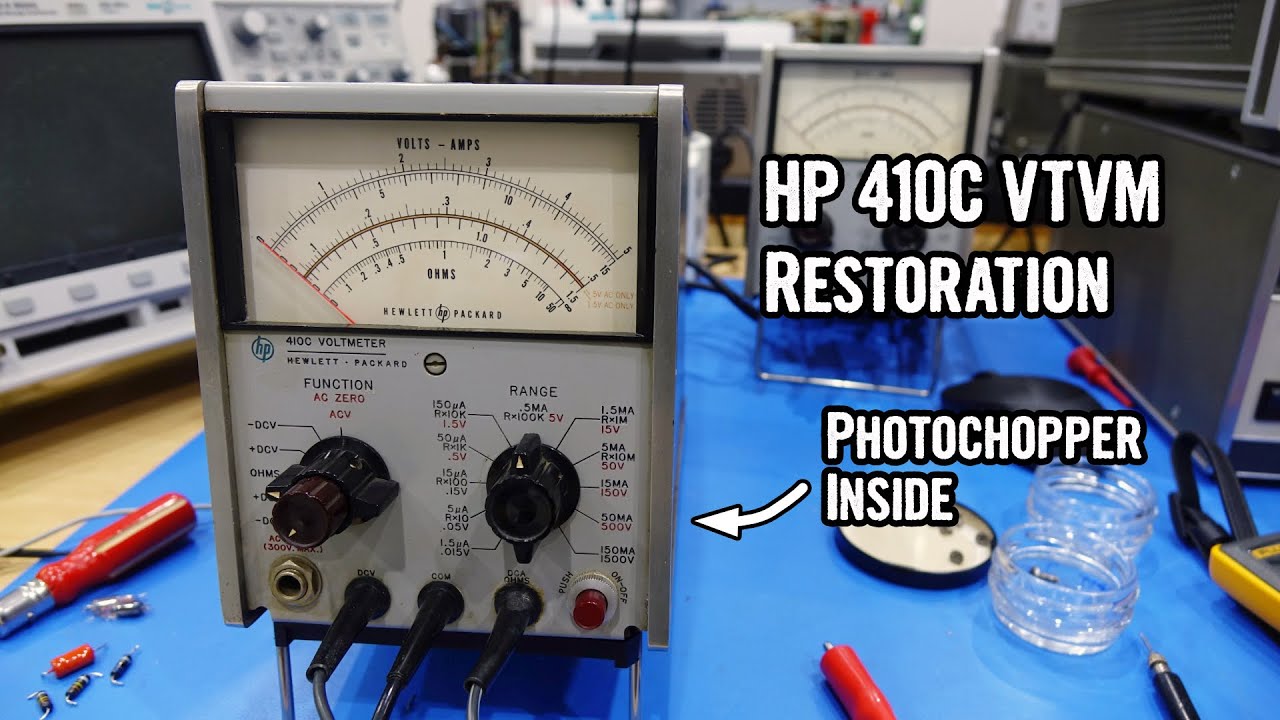The Vacuum-Tube Voltmeter (VTVM) was a mainstay of electronics engineers and technicians’ benches for decades, but is now largely forgotten. Present-day instruments are lighter, easier to use, and more versatile, but there are things a VTVM can do that the gear that supplanted it cannot, apart from a few exotic and expensive instruments rarely found outside laboratories.
The voltage signal being measured (when resistance or current is measured, a built-in auxiliary circuit converts it to a voltage) is applied directly to the grid of an amplifier tube in the input stage of the meter. This means the VTVM has extraordinarily high input impedance—in this case of this Hewlett-Packard model 410C, 100 megohms. What this means in practice is that the VTVM is far less likely to perturb the circuit it is measuring, particularly in high impedance stages common in vacuum tube electronics. It can also measure smaller voltages and correctly measure alternating current voltages at frequencies far above conventional meters (700 MHz for this model).
The 410C was a hybrid, using all-transistor circuitry with the exception of a single vacuum tube in the input stage. No transistor in 1963 could provide the high input impedance of a vacuum tube, so the single tube was essential to delivering its performance.
The two 410Cs on the restorers’ bench have seen better days, both showing evidence of abuse by a technician who had no idea how such an instrument operated. Can something be salvaged from the wreckage?
